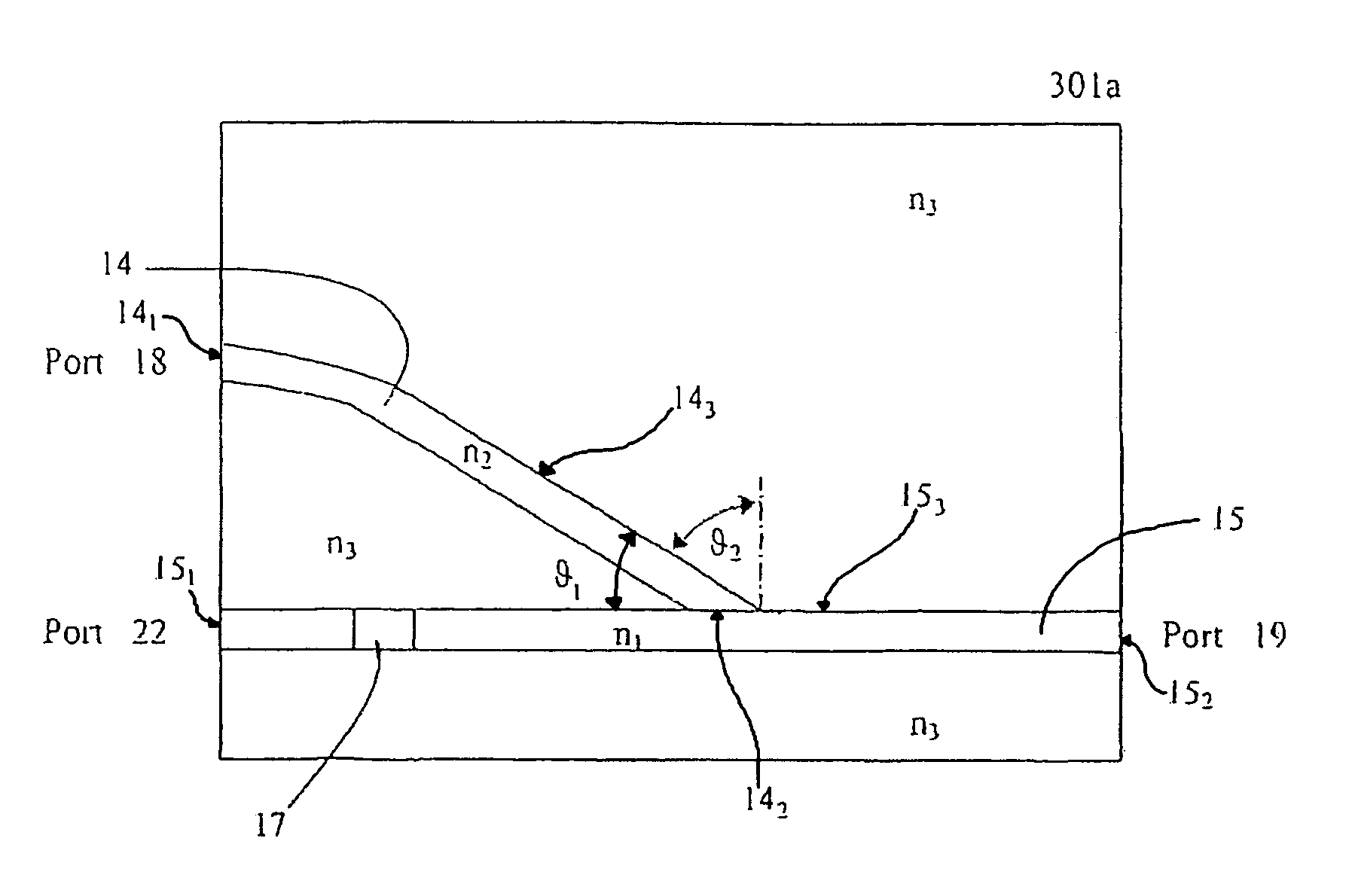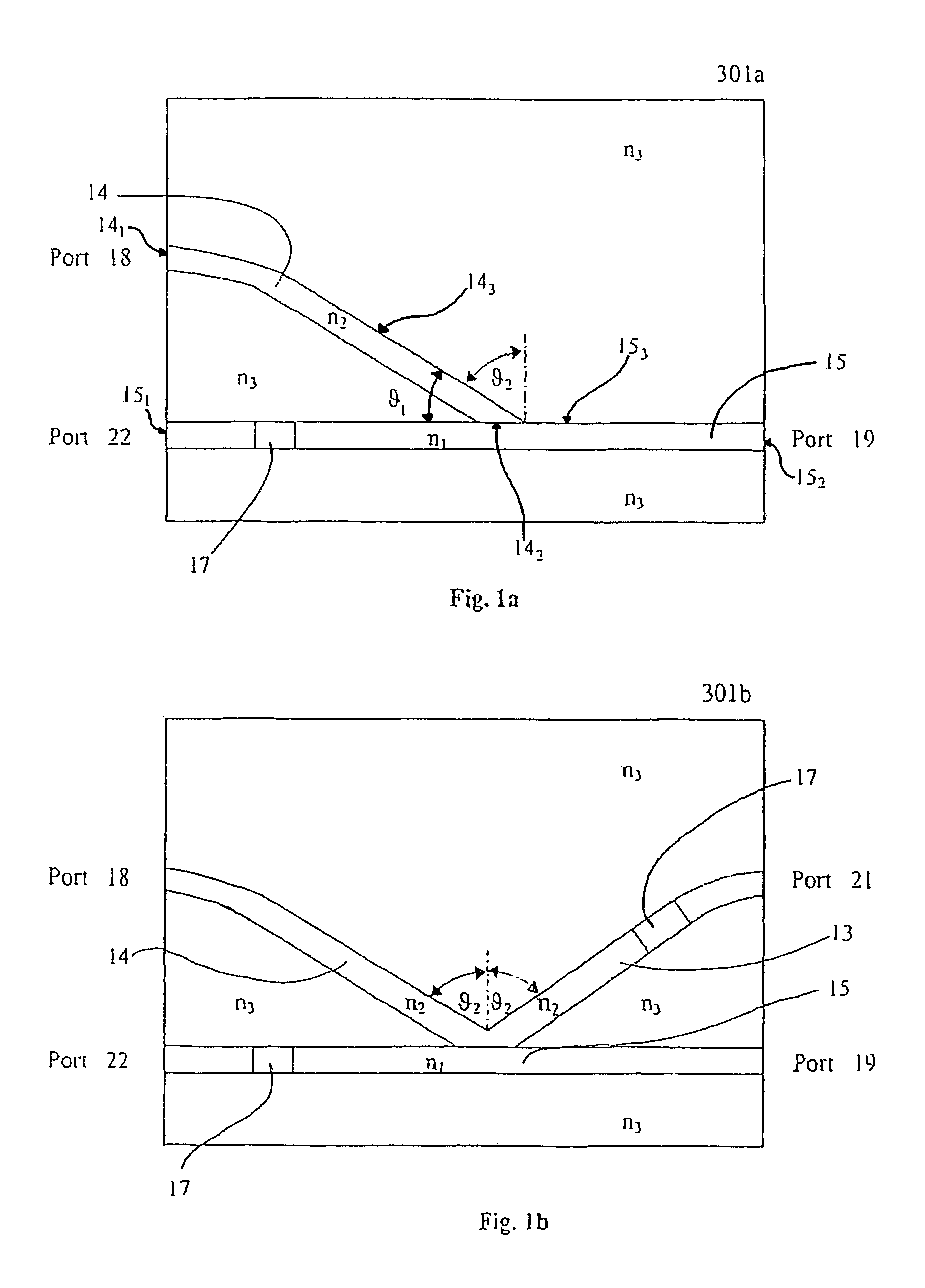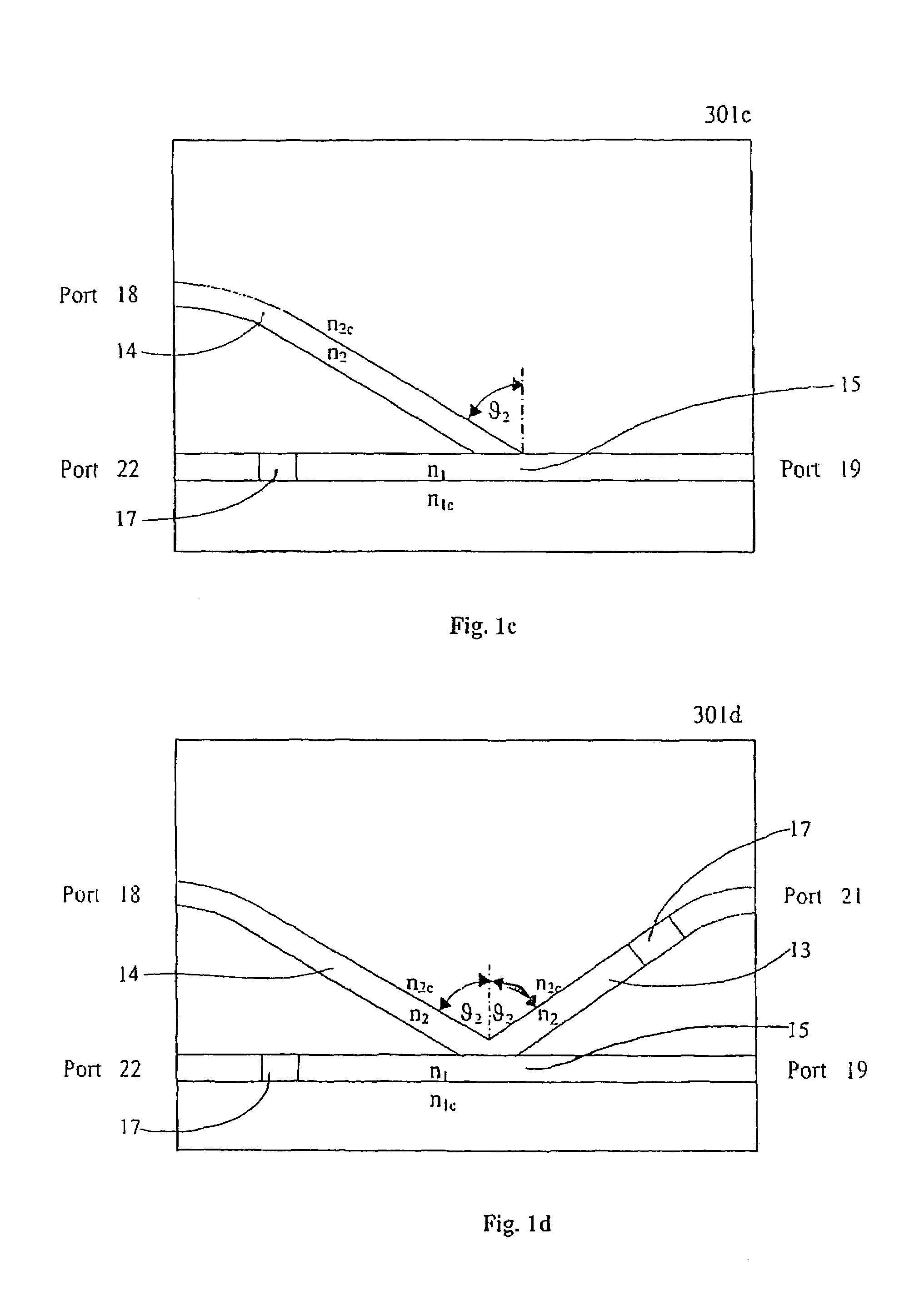Optical isolator, attenuator and polarizer system and method for integrated optics
a technology of optical isolators and polarizers, applied in the field of optics, can solve the problems of difficult integration with other optical devices, many difficulties of prior art optical isolators,
- Summary
- Abstract
- Description
- Claims
- Application Information
AI Technical Summary
Benefits of technology
Problems solved by technology
Method used
Image
Examples
example 1
[0029]Case 1)
[0030]For FIGS. 1a and 1b: given the refraction indexes n1=1.465, n2=1.460, n3=1.455 and θ2=85.30°, then the calculated insertion loss is ˜0.13 dB with ILp=0.129 dB and ILs=0.133 dB. The polarization dependent loss (i.e. ILs−ILp) is ˜0.004 dB and the isolation is ˜9 dB.
[0031]Case 2)
[0032]For FIGS. 1c and 1d: given the refractive indexes n1=1.465, n1c=1.460, n2=1.4625, n2c=1.4575 and θ2=86.70°, then the calculated insertion loss is ˜0.13 dB with ILp=0.133 dB and ILs=0.136 dB. The polarization dependent loss is ˜0.003 dB while the isolation is also ˜9 dB.
[0033]Thus, the isolation is polarization independent (ILp≈ILs). However, the isolation of ˜9 dB is below expectation. In Case 1 of Example 1 above, although with ideally parallel incident light, the numerical aperture of the output light NA(n1, n3) is 0.171 at the output port 19 while the other numerical apertures are: NA(n2, n3)=0.121, NA(n1, n2)=0.121. Since NA (n1, n3) is greater than NA (n1, n2), a portion of the rev...
example 2
[0036]For FIG. 1g: given the refraction indexes n1=1.500, n1c=1.4958, n2=1.450 n2c=1.4457, θ2=85° and θ1=76°, the calculated insertion loss are ILp=1.24 dB and ILs=1.39 dB. The polarization dependent loss is ˜0.15 dB, the numerical aperture of the output port 19 is low and thus the isolation greatly increases to ˜12 dB.
[0037]Another way of improving isolation for 301a, 301b, 301c, 301d, 301e and 301f is to decrease the transmitting area of the reverse light from branch 15 to branch 14. If it is reduced to one half, the isolation increases by 3 dB, and by 6 dB if it is reduced to one fourth. And if all the reverse light were reflected at the junction of branches 15 and 14, then the isolation becomes perfect. Therefore, one may add an optical choker 1 to port 18, 19, as shown in FIGS. 1e, 1f and 1h. The optical choker 1 serves two purposes: (1) it lowers the numerical aperture NA, for example from 0.171 to 0.1 or even 0.01 (2) it converges the light to the center part of branches 14 a...
example 3
[0039]In the context of Example 1, if the input light numerical aperture NA was 0.12 and θ2=85°, the attenuation of both the p- and s-polarization are ≈4.3 dB and their difference is almost zero (0.009 dB).
[0040]Therefore, the attenuation is polarization independent. Calculations indicate that the smaller the angle θ2, the larger the attenuation. The attenuation can be varied with the changing incident angle θ2. Thus, a variable optical attenuator is also feasible.
[0041]Optical isolator 301a, 301b, 301c, 301d, 301e, 301f, 301g and 301h, based on the total reflection principle, have a very simple structure and result in numerous improvements: its ruggedness, its superior thermal and environmental properties, its exceptional stability and reliability, and its excellent polarization independent optical performance. Moreover, it is easily integrated with other optical and opto-electronic devices. These qualities make it suitable to construct other optical devices such as a coupler, inse...
PUM
 Login to View More
Login to View More Abstract
Description
Claims
Application Information
 Login to View More
Login to View More - R&D
- Intellectual Property
- Life Sciences
- Materials
- Tech Scout
- Unparalleled Data Quality
- Higher Quality Content
- 60% Fewer Hallucinations
Browse by: Latest US Patents, China's latest patents, Technical Efficacy Thesaurus, Application Domain, Technology Topic, Popular Technical Reports.
© 2025 PatSnap. All rights reserved.Legal|Privacy policy|Modern Slavery Act Transparency Statement|Sitemap|About US| Contact US: help@patsnap.com



